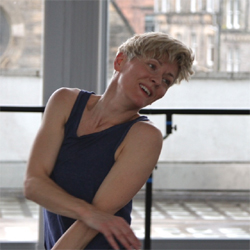 Glasgow-born Christine Devaney trained at London Contemporary Dance School and has been performing, choreographing and teaching throughout her extensive career. She was a founding member of Dundee Rep Dance Company (now Scottish Dance Theatre) and for nine years performed with the internationally acclaimed V-tol Dance Company where she became Associate Director and played a key role in developing their highly respected education work.
Glasgow-born Christine Devaney trained at London Contemporary Dance School and has been performing, choreographing and teaching throughout her extensive career. She was a founding member of Dundee Rep Dance Company (now Scottish Dance Theatre) and for nine years performed with the internationally acclaimed V-tol Dance Company where she became Associate Director and played a key role in developing their highly respected education work.
Christine’s performance and choreographic work spans across theatre and dance where she has worked with companies including: Tag Theatre, The Kosh, The Unicorn (London), Theatre Gargantua (Toronto), Frantic Assembly, Graeme Miller, Benchtours, Freshmess and Yolande Snaith Theatre Dance. Christine is a long-standing creative collaborator with Plan B in Scotland. Christine has continued to develop her teaching and mentoring practice throughout her career and is passionate about nurturing and challenging individual creativity alongside teaching dance and movement techniques. She has been involved as a mentor on the Young Dancer’s Bursary Scheme with Dance Base and was choreographic mentor for Tony Mill’s solo works Scottish tour (2010).
Christine is currently an Associate Artist with Imaginate and founded Curious Seed in 2005. The vision of the company is to create engaging, thought provoking, uncompromising performance work with physical expression at its core. Since 2005, Curious Seed has produced the solo work Almost, But Not Quite for the Edinburgh Festival Fringe (2005), Code Butterfly a large scale site-specific work for young women at Out of The Blue as part of the Leith Festival (2007). Their current show, Chalk About comes to the Lilian Baylis Studio at Sadler’s Wells on 1 & 2 November and features Christine.
Have you always wanted to be involved in dance?
I have to confess, yes! I started dancing when I was young mostly because my pals were doing it, but then I loved it and I was the one who continued as they stopped over the years. As well as going to local ballet and tap lessons I used to dance a lot on my own, in my room, or in the gym-hall during lunch break or after school. It was a P.E. teacher at school who introduced me to contemporary dance – thank you Mrs. MaCleod.
Where did you train and what was it like?
I trained at London Contemporary Dance School. Well, it was an amazing experience to leave home at 17 to be doing exactly what I wanted to do but it was also hugely challenging in many ways. Of course the physical training was hard and I was pushed, but that was what I was there for. It was more on a psychological level that I found it incredibly intense at times. I had great friends and found the support I needed.
Did you start choreographing young?
Mmm. That’s a very interesting question. I was always making up little dances and enjoyed contributing to the choreography in the group I was part of before going to London to train, and I knew that I wanted to explore choreography more. However the way that choreography was ‘taught’ at The Place at that time, was a little elusive, shall we say, and I was just wasn’t encouraged, and in fact was more or less told I wasn’t a choreographer. I found this strange and wondered why? And this stayed with me for many years. But there was a small group of Scottish students training at Laban and The Place who used to get together to make work anyway and sneak off and perform it at any given chance. My first job was with Dundee Rep Dance Co. (now Scottish Dance Theatre), and right from the beginning I was creating small pieces of work with community groups, but I suppose because I was concentrating on developing as a performer I didn’t think of myself as a choreographer for many years.
Do you prefer choreographing to performing?
I absolutely love and continue to be incredibly curious about the creative process, as a performer on the inside of it and a choreographer on the outside. I had thought a few years ago that I was going to stop performing, but here I am still doing it and still learning about what it is to be a performer. And I’ve still got so much to try and make and say as a choreographer – I’ve got a few years to catch up on, and maybe one day it will completely take preference over performing. I do know that even if I stop performing I won’t stop dancing.
How did Curious Seed come into being?
After many years of living and working in London, mostly with V-tol Dance Company, initially as a performer and latterly, Associate Director, I decided to return to Scotland. I felt that I had something to give to the dance community there. I also wondered if I had what it takes to drive a creative vision, rather being a good ‘right hand man’. You know, have the idea and start doing all that’s needed to turn this idea into art – the right people, funding… all of that stuff as well as getting into the studio and leading the creative process. So I formed Curious Seed, and have managed to continue exploring if I’m any good at it! I like to take my time with things.
What is a typical day like for you?
An egg for breakfast (I love eggs), some dance practice or body work of some kind, this varies for me, depending on if I’m doing research or in rehearsals or between projects, it could be class, improvising or Pilates, some admin – there is always some to do! Maybe some meetings. An evening meeting is good as it could involve a glass of wine. At the moment with being on tour with Chalk About, shows are typically in the morning or afternoon, so it’s all about preparing early for the show, then packing up then finding somewhere for dinner… it’s not too glamorous! I’m writing this on a day off, about go and have a swim and then try to start writing a funding report I need to do…
What’s the best part of dance for you?
I still love what dancing gives me personally, which is hard to put into words but as I have grown older it feels more and more spiritual. I’ve met incredible people through being involved in dance. People who have shown me different ways of experiencing the world. This has been very important to me and still is. It’s also an honour to connect people, audiences, strangers through the work.
What has the rehearsal process been like for Chalk About?
Very gradual! It started out in a workshop in late 2011 as a way of exploring how two people from different countries and who didn’t know each other could share ideas and work together… then we were commissioned to make this into a full show for the Imaginate Festival in Edinburgh in 2013. Initially it was just myself and Leandro Kees the other choreographer and dancer I created the work with, but then we brought on a designer, composer and lighting designer to contribute, so it became much more like the collaborative rehearsal process I like to cultivate for Curious Seed’s productions. We also spoke with children at different times during the making of the show and included their responses in different ways to help shape the show.
What is the hardest part of the rehearsal process?
With Chalk About it was having two lead artists who were both in the work, and who had different ideas, but of course this is what made the work what it is! Usually the hardest part of the process for me is the middle stage, and this is when what I call my ‘angel of doubt’ arrives. I have to listen to it, as it’s just part of me, but then I walk way from it, and carry on…
Do you have any advice for aspiring performers?
Find your own way, while working really hard to become a versatile performer. Follow your interests!!! Be inspired and motivated by others but don’t try to be like anyone else! Be kind to people, don’t take any s*-t. Remember to ask yourself now and again if you’re happy? Don’t be scared to ask for advice. Don’t lose your connection to your dance, your drive, your joy.
What are you most looking forward to about the performances?
Chalk About is really lovely to perform, as it has different emotional peaks and troughs and Hendrik (Le Bon, who performs the show with me now) is a joy to be on stage with, so just doing the show in different venues with different audiences will be fun and keep it very much alive and fresh for us. The audience reaction is great as they are laughing at us one moment and then in the next a moment of reflection and sadness. We dance and laugh and joke and talk about family, love and loss… And we then dance some more… what’s not to like about that?
What’s next?
It’s an exciting time for Curious Seed as we’ve just done our first five year plan! Of course we will need some funding and support but that’s a minor detail! There are so many great projects and possibilities in the pipeline. We’re already in the middle of developing a new a sight responsive work called Dust and All That… This is a co-production with Edinburgh theatre company, Magnetic North. I’ve also started research for a trilogy of work that I feel is for teenagers. I can’t wait to do and discover more about this…
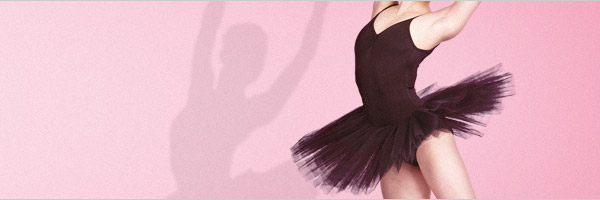 Making a ballet tutu can be a very rewarding experience. To see your costumes on stage after a long process of creating them creates feelings of pride and accomplishment, following carefully sewing on hooks and eyes, and creating layers and layers for the finished product.
Making a ballet tutu can be a very rewarding experience. To see your costumes on stage after a long process of creating them creates feelings of pride and accomplishment, following carefully sewing on hooks and eyes, and creating layers and layers for the finished product.
 Following the enormous success of last year’s festival, VAULT returns to Waterloo’s Leake Street tunnels from 28 January-8 March. Specifically, dance and physical theatre are one of VAULT’s areas of excellence this year with a wide programme of powerful and provocative shows taking over the venue.
Following the enormous success of last year’s festival, VAULT returns to Waterloo’s Leake Street tunnels from 28 January-8 March. Specifically, dance and physical theatre are one of VAULT’s areas of excellence this year with a wide programme of powerful and provocative shows taking over the venue. A new research project that aims to analyse the mental processes used by dancers while they are performing has been launched in order to develop a better understanding of creative techniques. The three-year project, funded by the Leverhulme Trust, is being led by Plymouth University and will work in collaboration with Trinity Laban Conservatoire of Music and Dance in London and Coventry University.
A new research project that aims to analyse the mental processes used by dancers while they are performing has been launched in order to develop a better understanding of creative techniques. The three-year project, funded by the Leverhulme Trust, is being led by Plymouth University and will work in collaboration with Trinity Laban Conservatoire of Music and Dance in London and Coventry University. Thousands of dancers – from professionals to absolute beginners – are set to join Swing Patrol’s Swing Dance balls across the UK from late October to the end of November. The balls celebrate the first tour of the UK from lindy hop legend, Frankie Manning, in the UK’s biggest series of swing dance events. “Swing”, “jitterbug” and “lindy hop” are all synonyms for the street dance style popularised by Manning and other dancers in New York City from the late 1920s to late 1940s as they fused style, energy and fun.
Thousands of dancers – from professionals to absolute beginners – are set to join Swing Patrol’s Swing Dance balls across the UK from late October to the end of November. The balls celebrate the first tour of the UK from lindy hop legend, Frankie Manning, in the UK’s biggest series of swing dance events. “Swing”, “jitterbug” and “lindy hop” are all synonyms for the street dance style popularised by Manning and other dancers in New York City from the late 1920s to late 1940s as they fused style, energy and fun.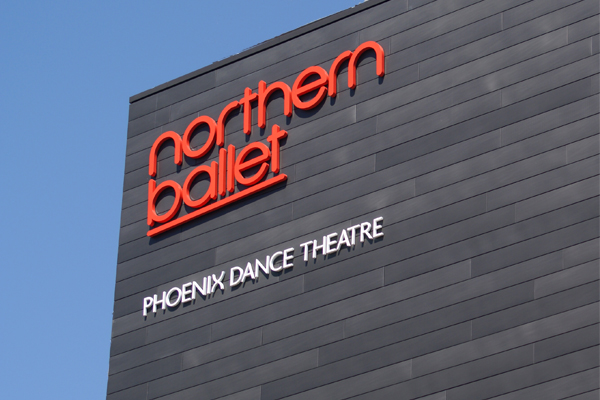 Leeds-based company Northern Ballet has recently announced its plans for 2015, following a very successful year on the stage and in the studio in 2014. Having staged a number of successful productions with the dust slowly settling, 2015 looks set to be another exciting year for the company.
Leeds-based company Northern Ballet has recently announced its plans for 2015, following a very successful year on the stage and in the studio in 2014. Having staged a number of successful productions with the dust slowly settling, 2015 looks set to be another exciting year for the company.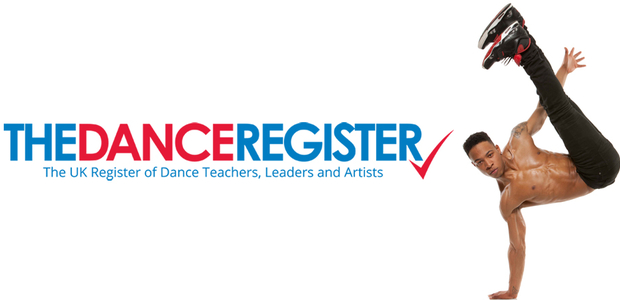 The Dance Register, the directory of UK-based dance teachers and leaders created by DTAP (Dance Training & Accreditation Partnership), champions and promotes high quality dance teaching and leadership. It includes teachers and leaders working in a wide range of dance styles and settings – from ballet and bollywood to ballroom, and salsa and Spanish to street!
The Dance Register, the directory of UK-based dance teachers and leaders created by DTAP (Dance Training & Accreditation Partnership), champions and promotes high quality dance teaching and leadership. It includes teachers and leaders working in a wide range of dance styles and settings – from ballet and bollywood to ballroom, and salsa and Spanish to street!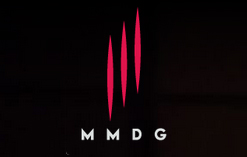 The Mark Morris Dance Group, in order to fulfil their global tour in October and November 2014, will be going both east and west: for the first time in the company’s 34 year history, it will split into two groups. Half the troupe’s dancers will tour the United States, Scotland, Italy and Switzerland, while the remainder will head for Cambodia, East Timor and Taiwan. The company will then reunite in Shenzhen, China on 11 November. The company spends around half of each year touring.
The Mark Morris Dance Group, in order to fulfil their global tour in October and November 2014, will be going both east and west: for the first time in the company’s 34 year history, it will split into two groups. Half the troupe’s dancers will tour the United States, Scotland, Italy and Switzerland, while the remainder will head for Cambodia, East Timor and Taiwan. The company will then reunite in Shenzhen, China on 11 November. The company spends around half of each year touring. Glasgow-born Christine Devaney trained at London Contemporary Dance School and has been performing, choreographing and teaching throughout her extensive career. She was a founding member of Dundee Rep Dance Company (now Scottish Dance Theatre) and for nine years performed with the internationally acclaimed V-tol Dance Company where she became Associate Director and played a key role in developing their highly respected education work.
Glasgow-born Christine Devaney trained at London Contemporary Dance School and has been performing, choreographing and teaching throughout her extensive career. She was a founding member of Dundee Rep Dance Company (now Scottish Dance Theatre) and for nine years performed with the internationally acclaimed V-tol Dance Company where she became Associate Director and played a key role in developing their highly respected education work.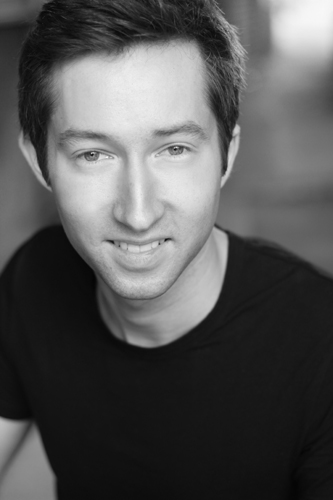 Damian has a diverse background in dance and theatre having been Danish Ballroom and Latin Champion on several occasions. He was 1st runner up in So You Think You Can Dance (Denmark) and went on to continue his training at Laine Theatre Arts.
Damian has a diverse background in dance and theatre having been Danish Ballroom and Latin Champion on several occasions. He was 1st runner up in So You Think You Can Dance (Denmark) and went on to continue his training at Laine Theatre Arts.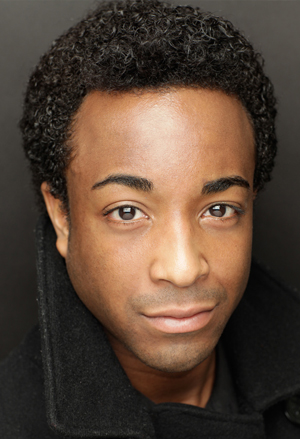 Darren was born in London England in the 1980s. He gained a scholarship for vocational training at The Urdang Academy where he trained extensively in acting, singing and dance. He graduated in 2007 with honours and went straight into his first show Carmen Jones at The Royal Festival Hall London.
Darren was born in London England in the 1980s. He gained a scholarship for vocational training at The Urdang Academy where he trained extensively in acting, singing and dance. He graduated in 2007 with honours and went straight into his first show Carmen Jones at The Royal Festival Hall London.